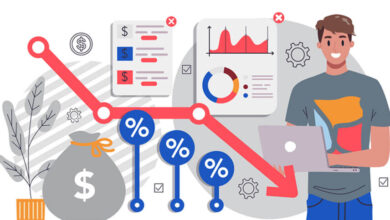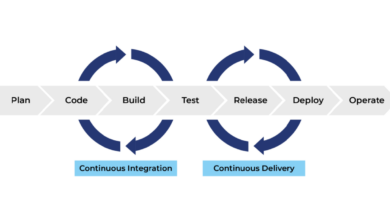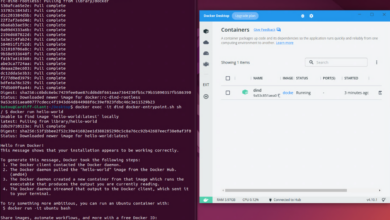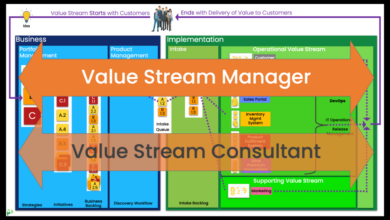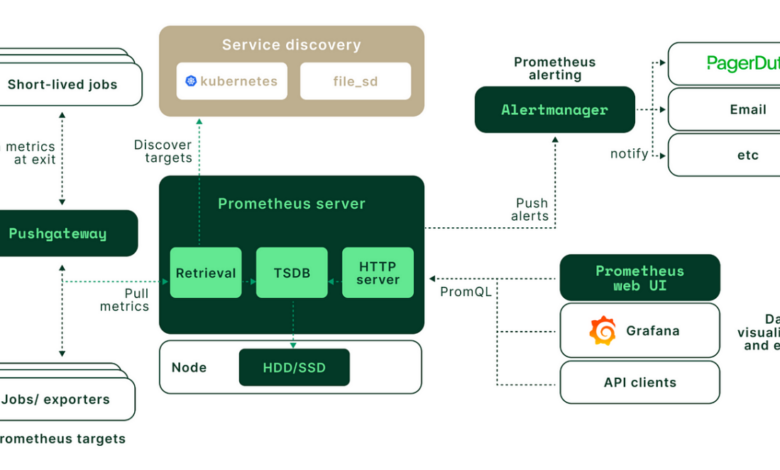
Agent vs Agentless Monitoring Why We Chose Agentless
Agent vs agentless monitoring why we chose agentless – Agent vs agentless monitoring: why we chose agentless – that’s the burning question we’re tackling today! For months, we wrestled with the age-old dilemma of choosing the right monitoring solution for our infrastructure. Agent-based monitoring seemed like the tried-and-true method, offering granular control and detailed insights. But agentless monitoring whispered promises of simplicity, scalability, and reduced overhead. This post dives into our decision-making process, outlining the pros and cons of each approach and ultimately revealing why we opted for the agentless route.
Prepare for a deep dive into the world of server monitoring!
We’ll cover everything from initial setup costs and ongoing maintenance to the impact on our network bandwidth and the security implications of each choice. We’ll also share specific examples of the challenges we faced and how choosing agentless monitoring helped us overcome them. Get ready to explore the intricacies of data collection, processing, and scalability, as we unpack the reasons behind our strategic shift towards a leaner, more efficient monitoring system.
Agent vs. Agentless Monitoring
Choosing the right monitoring approach for your infrastructure is crucial for maintaining uptime and performance. This often boils down to a decision between agent-based and agentless monitoring. Both methods offer distinct advantages and disadvantages, making the choice dependent on specific needs and priorities. Understanding the core differences is key to making an informed decision.Agent-based monitoring involves installing a software agent on each monitored system.
This agent collects data locally and transmits it to a central monitoring server. Agentless monitoring, on the other hand, relies on accessing system information remotely, without the need for any locally installed software. This typically involves using protocols like SNMP, WMI, or SSH.
Agent-Based Monitoring Tools
Agent-based monitoring offers a deep level of insight into system resources. The agents provide granular data collection, enabling detailed performance analysis and troubleshooting. Common examples of agent-based monitoring tools include:
- Nagios: A widely used open-source monitoring system offering comprehensive features and extensive community support.
- Zabbix: Another popular open-source solution known for its scalability and flexibility, suitable for managing large infrastructures.
- Datadog: A cloud-based monitoring platform offering comprehensive features, including metrics, logs, and traces, with strong integrations.
- Prometheus: An open-source monitoring system focused on metrics collection and alerting, often used in containerized environments.
Agentless Monitoring Tools
Agentless monitoring simplifies deployment and reduces the overhead of managing agents across numerous systems. However, it might not provide the same level of granular detail as agent-based approaches. Examples of agentless monitoring tools include:
- SolarWinds Network Performance Monitor: A commercial tool that uses SNMP to monitor network devices without needing agents.
- ManageEngine OpManager: Another commercial tool leveraging SNMP and other protocols for agentless network monitoring.
- PRTG Network Monitor: A commercial solution that supports both agent-based and agentless monitoring, providing flexibility in deployment.
- Check_MK: An open-source monitoring solution that supports agentless monitoring via SNMP and other protocols.
Comparison of Agent-Based and Agentless Monitoring
The following table summarizes the key differences between agent-based and agentless monitoring:
| Feature | Agent-Based | Agentless | Advantages/Disadvantages |
|---|---|---|---|
| Deployment | Requires agent installation on each system | No agent installation needed | Agent-based: More complex deployment; Agentless: Easier deployment, but potentially limited access |
| Data Collection | Granular data collection from local resources | Relies on remote access methods (SNMP, WMI, SSH, etc.) | Agent-based: More detailed data; Agentless: Less detailed data, potential performance impact on the monitored system due to remote queries. |
| Performance Overhead | Can introduce some performance overhead on monitored systems | Generally lower performance overhead on monitored systems | Agent-based: Resource consumption on monitored systems; Agentless: Lower resource impact, but potential network congestion with many monitored systems. |
| Security | Agent security needs to be considered | Security relies on network security and access control | Agent-based: Potential vulnerability if agents are compromised; Agentless: Security relies on network infrastructure security. |
| Cost | Potentially higher initial setup cost due to agent management | Potentially lower initial setup cost | Agent-based: Requires management and maintenance of agents; Agentless: Reduced management overhead. |
Deployment and Infrastructure Considerations
Choosing between agent-based and agentless monitoring significantly impacts your infrastructure requirements and deployment process. Agent-based systems introduce more complexity, while agentless solutions often rely heavily on network access and potentially, more powerful central servers. Understanding these differences is crucial for making an informed decision.Agent-based monitoring requires installing and managing software agents on each monitored system. Agentless monitoring, on the other hand, leverages existing network protocols and system interfaces to collect data without needing agents.
This difference leads to significant variations in deployment, infrastructure needs, and security considerations.
Infrastructure Requirements
Agent-based monitoring necessitates sufficient resources on each target machine to accommodate the agent software. This includes CPU cycles, memory, and disk space. The number of agents scales directly with the number of monitored systems, potentially placing a burden on your IT infrastructure, especially if you’re monitoring a large and diverse environment. Agentless monitoring, conversely, demands robust central servers capable of handling the increased volume of data collected without the benefit of pre-processing by agents on individual machines.
The central server needs significant processing power, memory, and storage to accommodate the data influx. A highly scalable and reliable infrastructure is vital for agentless systems to avoid performance bottlenecks.
Installation Process
Agent-based monitoring involves installing and configuring agents on each target system. This process can be automated to some degree using scripting and configuration management tools like Ansible or Puppet. However, it still requires access to each machine, potentially involving manual intervention for systems with limited network access or specialized configurations. Installation might require administrator privileges, and potential conflicts with existing software must be considered.
Agentless monitoring, typically, requires configuring the central monitoring server to access the necessary network ports and system interfaces on the target machines. This often involves network configuration changes (e.g., firewall rules) and careful consideration of network security. While the installation process is simpler in terms of individual machines, the complexity shifts to the central server’s setup and configuration.
Network Bandwidth Consumption
Agent-based monitoring generally consumes less network bandwidth compared to agentless monitoring. Agents pre-process data locally before transmitting only summarized or critical information to the central server. Agentless monitoring, however, transmits raw data directly from the monitored systems to the central server, resulting in potentially higher bandwidth usage. The extent of this difference depends on the volume of data collected and the level of data aggregation performed by agent-based systems.
For example, an agent might only send alerts when a threshold is exceeded, whereas agentless monitoring might send continuous streams of metrics.
Security Implications
Agent-based monitoring introduces the security risk associated with deploying and maintaining agents on numerous systems. Each agent represents a potential attack vector, and vulnerabilities in the agent software could compromise the monitored systems. Regular patching and updates are crucial to mitigate these risks. Compromised agents could allow attackers to gain access to sensitive data or even control the monitored systems.
Agentless monitoring, while avoiding the direct risk of compromised agents, presents security challenges related to network access and data transmission. Protecting the central server and securing network communication channels is paramount. Unauthorized access to the central server could expose all collected data, potentially leading to a significant data breach. Furthermore, the increased volume of data transmitted in agentless systems can increase the potential for eavesdropping or data interception if not properly secured using encryption and other security protocols.
Data Collection and Processing
Choosing between agent-based and agentless monitoring significantly impacts how data is collected and processed. Understanding these differences is crucial for optimizing your monitoring strategy and ensuring you’re getting the most relevant insights. This section dives into the specifics of data collection and processing in both approaches, highlighting their strengths and weaknesses.Agent-based monitoring relies on software agents installed directly on the monitored systems.
So, agent vs. agentless monitoring? We went agentless for its simplicity and reduced overhead. This streamlined approach freed up resources, which is especially important when you consider the scalability needed for modern app development, like what’s discussed in this insightful article on domino app dev, the low-code and pro-code future. Ultimately, the agentless method aligns perfectly with our goal of efficient monitoring without compromising performance – a key factor in our application’s overall success.
These agents collect data locally and then transmit it to a central management server. Agentless monitoring, conversely, relies on remote access methods to gather data without installing any software on the target systems. This often involves leveraging existing system interfaces and protocols. The key difference lies in the location of data collection: on the monitored system itself (agent-based) versus remotely (agentless).
Data Collection Methods
Agent-based systems employ lightweight agents that run on the monitored machines, collecting data directly from the operating system, applications, and other relevant sources. This provides a deep and granular view into system performance. Data collection is typically performed using APIs, system calls, or custom scripts. For example, an agent might collect CPU utilization, memory usage, disk I/O, and network traffic directly from the system’s kernel.
Conversely, agentless monitoring leverages remote access protocols like SSH, WMI (Windows Management Instrumentation), or SNMP (Simple Network Management Protocol) to retrieve data from the target systems. This often means relying on system-provided metrics rather than collecting more granular data points. For instance, an agentless system might use SNMP to collect basic network interface statistics. The choice between these approaches depends heavily on security considerations, the level of detail required, and the resources available on the monitored systems.
Data Processing and Analysis
Data processing in agent-based monitoring often involves pre-processing on the agent itself before transmission to the central server, reducing bandwidth consumption and processing load on the central server. This pre-processing might include aggregation, filtering, or transformation of raw data. The central server then receives and stores the processed data, facilitating further analysis and visualization. Agentless systems, however, typically send raw data to the central server for processing.
This puts more load on the central server but often provides more flexibility in post-processing and analysis, as all raw data is available. The analysis techniques employed in both approaches are generally similar, utilizing statistical methods, machine learning algorithms, and data visualization tools to identify trends, anomalies, and potential issues. For example, both agent-based and agentless systems can use time-series analysis to detect performance degradation.
Data Types and Suitability
Agent-based monitoring excels at collecting detailed, granular data, making it ideal for applications requiring deep insights into system behavior. This includes metrics like process-level CPU usage, individual file I/O operations, and application-specific performance counters. Agentless monitoring, with its reliance on readily available system metrics, is best suited for tasks requiring a high-level overview of system health and performance.
It’s particularly effective for monitoring large numbers of systems where installing agents on each system is impractical or impossible. For example, network device monitoring often benefits from agentless approaches, as many network devices do not support agent installation.
Real-Time Capabilities
The following bullet points compare the real-time capabilities of agent-based and agentless monitoring systems:
- Latency: Agent-based systems generally offer lower latency due to local data collection and potentially pre-processed data. Agentless systems may experience higher latency due to the overhead of remote access and data transfer.
- Frequency of Data Collection: Agent-based systems can collect data at higher frequencies, providing more granular insights into real-time system behavior. Agentless systems are often limited by the polling intervals of their protocols.
- Data Granularity: Agent-based systems provide finer-grained data, offering a more comprehensive picture of real-time system performance. Agentless systems offer less granular data, often providing only high-level summaries.
- Scalability: Agentless systems can be more easily scaled to monitor a large number of devices. Agent-based systems may require more management overhead as the number of monitored systems increases.
Scalability and Performance
Agent-based and agentless monitoring approaches differ significantly in how they scale and impact the performance of monitored systems. Understanding these differences is crucial for choosing the right solution for your infrastructure. Agentless monitoring, while often simpler to deploy, can face limitations in scalability and performance under heavy load compared to its agent-based counterpart.Agent-based monitoring typically involves installing lightweight agents on each monitored system.
These agents collect data locally, reducing the load on the central monitoring server. Agentless monitoring, on the other hand, relies on accessing systems remotely, often using protocols like SNMP or WMI. This can lead to increased network traffic and processing demands on both the monitored systems and the central server, especially as the number of monitored systems grows.
Scalability of Agent-Based and Agentless Monitoring
Agent-based monitoring excels in scalability due to its distributed architecture. As you add more systems to monitor, you simply install agents on those systems. The central server’s workload increases proportionally, but the impact on individual systems remains relatively constant. Agentless monitoring, however, can become increasingly resource-intensive on both the monitored systems and the central server as the number of monitored systems grows.
The central server needs to handle all data collection and processing, leading to potential bottlenecks and performance degradation. A large-scale deployment with thousands of servers might overwhelm an agentless system, causing delays and missed alerts.
Performance Impact on Monitored Systems
Agent-based monitoring generally has a minimal performance impact on monitored systems. The agents are designed to be lightweight and consume minimal resources. Agentless monitoring, however, can significantly impact the performance of monitored systems, especially under heavy load. The constant polling of system resources and the transmission of large amounts of data over the network can consume significant CPU cycles, memory, and network bandwidth.
This can negatively affect the performance of applications running on the monitored systems.
Resource Utilization Under Heavy Load
Under heavy load, the differences in resource utilization between agent-based and agentless monitoring become even more pronounced. In an agent-based system, the load is distributed across the agents and the central server, mitigating the impact on any single system. In an agentless system, however, the central server bears the brunt of the load, potentially leading to performance degradation and even system failure.
Monitored systems also experience increased load due to the continuous remote data collection. This can result in slower response times and application performance issues.
Performance Comparison in Various Scenarios
| Scenario | Agent-Based Performance | Agentless Performance | Observations |
|---|---|---|---|
| Monitoring 10 servers | Minimal performance impact on servers; efficient central server processing. | Minor performance impact on servers and central server; manageable network traffic. | Agentless shows slight overhead, but overall manageable. |
| Monitoring 100 servers | Minimal performance impact on servers; efficient central server processing, potentially requiring scaling of central server resources. | Noticeable performance impact on servers and significant load on central server; increased network traffic; potential for bottlenecks. | Agentless begins to show significant limitations; scaling becomes challenging. |
| Monitoring 1000 servers | Minimal performance impact on servers; efficient central server processing, requiring significant scaling of central server resources; potential for agent-specific scaling needed. | Severe performance impact on servers and overwhelming load on central server; extremely high network traffic; significant bottlenecks and potential system failures. | Agentless approach is impractical at this scale; agent-based is far more scalable and efficient. |
Cost and Maintenance
Choosing between agent-based and agentless monitoring significantly impacts your overall cost and maintenance efforts. While agent-based systems might seem initially cheaper, the long-term costs can quickly outweigh the benefits. Agentless monitoring, while requiring a potentially larger initial investment in infrastructure, often offers superior cost-effectiveness in the long run due to reduced maintenance overhead and scalability.Agent-based and agentless monitoring solutions differ substantially in their initial setup costs and ongoing maintenance requirements.
These differences stem from the fundamental architectural choices: the need for deploying and managing agents versus leveraging existing infrastructure. Understanding these differences is crucial for making an informed decision.
Initial Setup Costs
Agent-based systems typically have lower initial setup costs. The software is often lightweight and easily deployed on individual servers or devices. However, this simplicity can be deceptive. The cost of deploying and managing agents across a large infrastructure, especially in complex environments, can quickly escalate. Agentless systems, on the other hand, might necessitate investment in more robust network infrastructure to support the increased data collection demands.
They may also require specialized tools or integrations with existing monitoring platforms, which can lead to higher upfront expenses. For example, an agentless system relying on SNMP might require a significant investment in network monitoring hardware and software to collect the necessary metrics. In contrast, an agent-based system might only need the cost of the agent software itself, plus minimal administration time.
Ongoing Maintenance Requirements
Agent-based systems demand continuous maintenance. Agents require regular updates, patching, and configuration management. This translates to ongoing IT operational costs, including personnel time for updates, troubleshooting, and performance tuning. Agent failures can disrupt monitoring, leading to further maintenance costs. Agentless monitoring, however, typically requires less ongoing maintenance.
While the underlying infrastructure might need maintenance, the absence of agents simplifies management. The reduction in the number of moving parts significantly reduces the risk of failures and the associated troubleshooting and remediation efforts. For instance, imagine the scenario of patching hundreds of agents across a large network versus maintaining a single, centralized agentless monitoring system. The difference in time and resource consumption is substantial.
Licensing Models and Associated Costs
Licensing models vary significantly between agent-based and agentless monitoring systems. Agent-based systems often employ per-agent licensing, where each monitored device requires a separate license. This can become expensive for large-scale deployments. Agentless systems may use a per-host or per-instance licensing model, or a subscription-based model based on the volume of data collected. Therefore, while the initial cost might be higher, the long-term cost per monitored device could be lower.
Some vendors might offer tiered licensing options, impacting the total cost depending on the chosen features and scalability needs. Understanding these nuances is vital for accurate cost projections.
Long-Term Cost Implications
The long-term cost implications of each monitoring strategy are significant and should be carefully considered.
- Agent-based: Higher ongoing maintenance costs due to agent management, updates, and troubleshooting. Potential for increased licensing costs with expansion. Risk of agent failures leading to monitoring downtime and associated costs.
- Agentless: Lower ongoing maintenance costs due to simplified management. Potential for higher initial infrastructure investment. Scalability costs depend on the chosen licensing model and data volume.
Consider a hypothetical scenario: A company with 1000 servers. An agent-based system might cost $10 per agent annually, totaling $10,000 per year. An agentless system might have a higher upfront cost but a lower annual cost, potentially $5000 annually, assuming a subscription-based model. Over five years, the agent-based system would cost $50,000, while the agentless system might cost $30,000 (including the initial investment).
This illustrates how the long-term costs can vary substantially.
Reasons for Choosing Agentless Monitoring
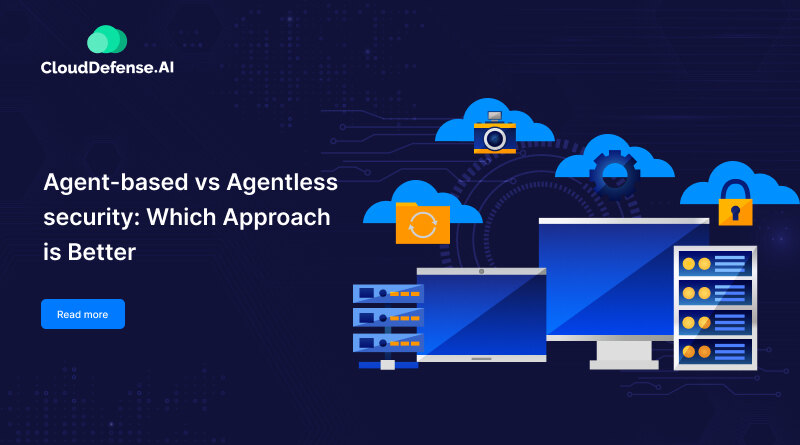
Our decision to implement agentless monitoring over agent-based monitoring stemmed from a careful evaluation of our specific infrastructure, security needs, and long-term scalability goals. Agent-based solutions, while offering granular data in some cases, presented significant challenges in our dynamic and geographically dispersed environment. The benefits of agentless monitoring ultimately outweighed the perceived limitations.Agentless monitoring offered a compelling solution to several critical challenges we faced.
Primarily, the deployment and management overhead associated with agents across thousands of servers and virtual machines proved unsustainable. The need for consistent updates, patching, and troubleshooting across such a diverse and large-scale environment would have required a substantial increase in our IT support team and operational costs. Agentless monitoring, relying on existing infrastructure protocols and network data, eliminated this burden entirely.
Reduced Deployment Complexity
Implementing agentless monitoring significantly simplified our deployment process. Instead of manually installing and configuring agents on each server, we leveraged existing network infrastructure and protocols like SNMP, WMI, and APIs. This eliminated the need for dedicated agent management, reduced potential conflicts with existing software, and allowed for quicker onboarding of new systems. The time saved in deployment translated directly into cost savings and faster time-to-value for our monitoring solution.
For example, onboarding a new server previously took an average of 30 minutes with agent-based monitoring; with agentless monitoring, this is reduced to less than 5 minutes.
Enhanced Security Posture, Agent vs agentless monitoring why we chose agentless
A key advantage of agentless monitoring is its reduced attack surface. Agents, being software components installed on individual systems, introduce a potential vulnerability point. Agentless monitoring, relying on external data collection methods, minimizes this risk, strengthening our overall security posture. The absence of agents reduces the potential for unauthorized access or manipulation of sensitive data. We experienced a significant decrease in security alerts related to agent-related vulnerabilities after switching to an agentless system.
Improved Scalability and Performance
Agentless monitoring proved exceptionally scalable and performed significantly better than our previous agent-based solution. The absence of agents on individual systems eliminated the performance overhead associated with agent processes, resulting in minimal impact on server resources. This improved overall system performance and allowed us to efficiently monitor a rapidly growing infrastructure without encountering performance bottlenecks. Our ability to scale our monitoring capabilities effortlessly was a major factor in choosing this approach.
Key Advantages Leading to Agentless Monitoring Selection
The decision to adopt agentless monitoring was driven by a confluence of factors. The following bullet points summarize the key advantages that ultimately led to this choice:
- Simplified Deployment and Management: Eliminated the need for agent installation, configuration, and maintenance across a large infrastructure.
- Enhanced Security: Reduced the attack surface and minimized the risk of agent-related vulnerabilities.
- Improved Scalability and Performance: Enabled efficient monitoring of a growing infrastructure without performance bottlenecks.
- Reduced Operational Costs: Lowered IT support costs associated with agent management and troubleshooting.
- Faster Time-to-Value: Accelerated the deployment of new monitoring capabilities.
Case Study: Agentless Monitoring Implementation at StellarTech
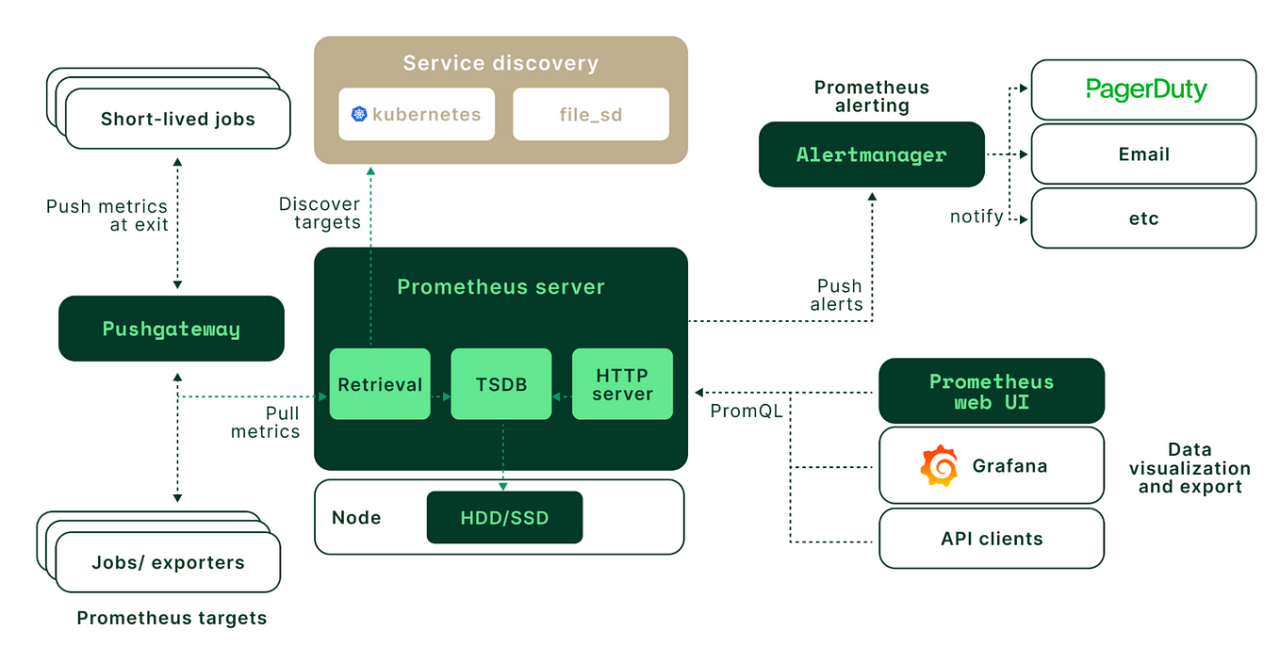
StellarTech, a rapidly growing fintech company, faced challenges scaling its monitoring infrastructure to support its expanding microservices architecture. Their existing agent-based system proved cumbersome to deploy and maintain across their diverse cloud environments (AWS, Azure, and on-premise). This case study details their successful transition to an agentless monitoring solution using a cloud-native platform.
Implementation Steps
The implementation was phased to minimize disruption to existing operations. First, StellarTech identified key performance indicators (KPIs) requiring monitoring, focusing on application performance, network latency, and resource utilization. Next, they selected a cloud-native agentless monitoring platform that integrated seamlessly with their existing cloud infrastructure and offered robust API access. The chosen platform provided pre-built dashboards and alerts for common cloud services, minimizing custom development.
Third, the team configured the platform to collect metrics from various sources, including cloud provider APIs, network devices, and application logs. Finally, they migrated existing dashboards and alerts from the agent-based system, ensuring minimal downtime during the transition. This phased approach allowed for continuous validation and iterative improvements.
Challenges and Solutions
One primary challenge was ensuring comprehensive data coverage without relying on agents. This was addressed by leveraging the platform’s ability to collect metrics directly from cloud provider APIs and through integration with existing logging and tracing systems. Another challenge involved dealing with data volume and processing speed. StellarTech addressed this by implementing appropriate data filtering and aggregation techniques within the agentless platform.
Finally, the team faced some initial difficulties integrating the agentless platform with their existing alerting and incident management system. This was resolved through careful configuration and utilization of the platform’s extensive API capabilities, allowing for seamless data transfer and integration.
System Architecture and Data Flow
Imagine a diagram showing three distinct cloud environments (AWS, Azure, and on-premise) represented by interconnected boxes. Arrows originating from each box point to a central, large rectangular box labeled “Agentless Monitoring Platform.” Smaller boxes within the central box represent key components: Data Ingestion, Data Processing, Data Storage, and Alerting/Visualization. Arrows indicate the flow of data from the cloud environments to the Data Ingestion component, then through Data Processing and Storage, finally culminating in the visualization of metrics and triggering of alerts in the Alerting/Visualization component.
The platform uses a distributed architecture with horizontal scaling capabilities, enabling it to handle the increasing volume of data from StellarTech’s expanding infrastructure. Data is ingested via APIs, and the platform utilizes advanced analytics to identify anomalies and trends. The visualization component offers customized dashboards providing real-time insights into system performance. The entire system is designed for high availability and resilience.
Conclusion
So, there you have it – our journey from the crossroads of agent-based versus agentless monitoring to our final decision. While agent-based monitoring offers a level of detail that’s undeniably attractive, the simplicity, scalability, and reduced overhead of agentless monitoring ultimately proved to be the winning combination for our needs. The streamlined implementation, reduced maintenance burden, and enhanced security posture were all key factors in our decision.
We hope this detailed look into our process provides valuable insights for those facing similar choices. Choosing the right monitoring solution is a crucial step in maintaining a healthy and efficient system – and we’re thrilled with the outcome of our agentless adventure!
FAQ Insights: Agent Vs Agentless Monitoring Why We Chose Agentless
What are the limitations of agentless monitoring?
Agentless monitoring might lack the granular detail provided by agents, potentially missing some specific metrics. It also relies heavily on network accessibility to the monitored systems.
Is agentless monitoring suitable for all environments?
No, agentless monitoring isn’t a one-size-fits-all solution. Environments with strict network security policies or requiring extremely granular data might benefit more from agent-based systems.
How does agentless monitoring impact system performance?
Generally, agentless monitoring has a much lower performance impact on monitored systems because it doesn’t require installing and running agents on each server.
What about security concerns with agentless monitoring?
While agentless monitoring reduces the attack surface compared to agents, it’s still crucial to secure network access and use robust authentication methods.
